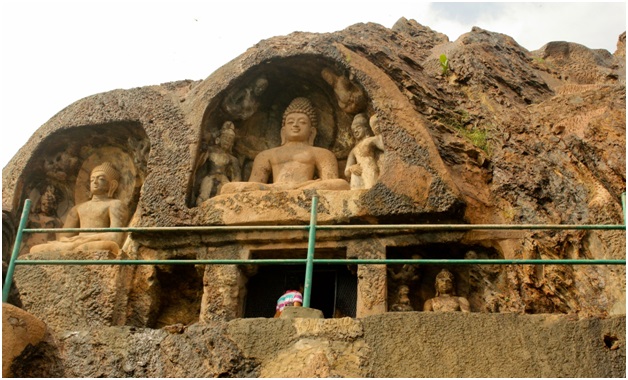Bojjannakonda (The Hindu)

- 05 Oct 2023
Why in the News?
Recently, the Central government allocated 7.30 crore rupees to undertake landscaping and develop tourist amenities at the Bojjannakonda site.
About Bojjannakonda:
- Bojjannakonda is situated in the state of Andhra Pradesh.
- It was excavated by Alexander Rim in 1906.
- Originally known as ‘Buddhuni konda’ (meaning hill of the Buddha), it eventually came to be known as ‘Bojjannakonda’ over time.
- Approximately 2,000 years ago, Buddhist monks used this hill for their practices.
- During excavations, various artifacts were unearthed, including a gold coin from the Samudra Gupta period, copper coins from the Chalukya king Kubja Vishnu Vardhan, coins from the Andhra Satavahanas, and pottery.
- Bojjannakonda is unique as it reflects features of all three phases of Buddhism: Hinayana, Mahayana, and Vajrayana.
- Notable discoveries at the site include a figure of ‘Kalabhairava’ with the head of Lord Ganesha adorned with conch shells and the statue of a Buddhist monk named ‘Harati.’
- There is a large double-storeyed cave on the hill with a rectangular doorway flanked by 'dwarapalakas' on both sides.
- At its center stands a rock-cut stupa on a square platform.
- The northern side of the hill features a series of rock-cut caves and monolithic structures on rock platforms.
- The upper cave has a rectangular doorway, with Buddha figures on either side.
- The prominent attractions for tourists at Bojjannakonda are the imposing figures of the Buddha seated in a meditative posture and the stupa.
- At the hill's summit, there are structural buildings and a vihara (monastery), which are now in ruins.
- To the west of Bojjannakonda lies another hillock called Lingalakonda or Lingalametta, where several monolithic and structural stupas can be found.
- Interestingly, the structures on Lingalametta served as inspiration for the Buddhist temple at Barabodur in Java.
- Similarities between the caves at Bojjannakonda and those in Takshasila suggest Buddhist influences, although the word ‘Sangrama’ was used in Takshasila but not in Andhra Pradesh.
